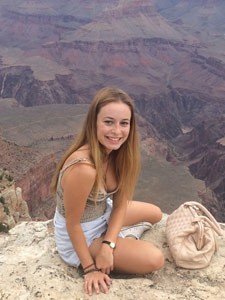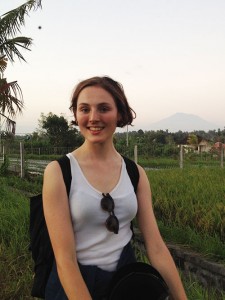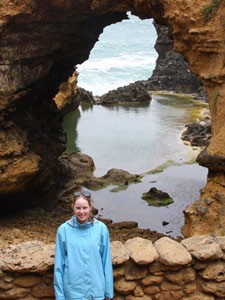 QGIS application in field geology
QGIS application in field geology
Basin GENESIS Hub Supervisors: A/Prof Patrice, Dr Sabin Zahirovic, Luke Mondy, Prof Dietmar Müller
Geographic information systems (GIS) have played a significant role in the advances in geologic field data analysis. This project involves the use of QGIS (an open source, community driven GIS which runs on Linux, Windows and MaxOS) to produce map package of pertinent geological and geophysical data (including topographic, lithologic, magnetic, and gravitational data), for use in combination with measurements taken in the field. The project also involves producing an iBook explaining how such a map package can be put together.
 Tectonic and mantle convection modelling of the Papua New Guinea margin
Tectonic and mantle convection modelling of the Papua New Guinea margin
Basin GENESIS Hub Supervisors: Dr Sabin Zahirovic, Dr Nicolas Flament, Prof Dietmar Müller, A/Prof Patrice, Luke Mondy
Industry contact: Dr Kevin Hill (Oil Search)
The New Guinea margin has experienced a complex history of rifting, subduction, collision and reactivation. New techniques are required to better understand the geological evolution of this region due to poor rock exposure and remoteness of Papua New Guinea. This project will combine plate reconstructions and geodynamic models to evaluate the influence of mantle-driven topography (“dynamic topography”) on basin evolution, as well as better understand the mantle structure beneath PNG in order to create more realistic plate tectonic scenarios of the region.
 Mantle convection and Australian landscape evolution
Mantle convection and Australian landscape evolution
Basin GENESIS Hub Supervisors: Prof Dietmar Müller, Dr Tristan Salles, Dr Nicolas Flament
It has long been identified that continents tilt as they drift over the convecting mantle. Australia is an ideal continent to study this process because it has undergone little tectonic deformation since the Jurassic. The aim of this project is to model the evolution of the Australian landscape over the last 150 Myr from a history of varying climate, sea level and mantle-driven dynamic topography.
The project will involve analysing the time-dependence of erosion and drainage patterns, and to compare them with denudation rates and paleo-drainage from paleogeography and the sedimentary record in key basins. This will require the use of analytical skills, basic scripting (in shell, python or other) and the use of the surface-process code Badlands. This project will prepare students both for working in the exploration industry as well as for a research-oriented career in government agencies or universities.
Exploring the tectonic controls on Earth’s climate over the last 60 million years
Supervisors: Dr Maria Seton and Prof Dietmar Müller
Oceanic gateways are narrow, shallow, or diffuse connections between neighbouring oceans and focal areas for the large-scale exchange of water, heat, salinity, nutrients and genes between ocean basins. They are the product of very slow tectonic processes occurring over tens of millions of years, becoming wider and deeper during protracted periods of continental break-up, and eventually lead to the establishment of deep-water flow between ocean basins. Over the same period, other ancient gateways have closed, forming oceanic barriers, prohibiting exchange between oceans. The best-known examples of oceanic gateways are those that developed during the Cenozoic Era (~last 60 million years), a period of Earth’s history characterised by a general cooling of our planet. Plate tectonic movements leading to the opening and closing of oceanic gateways have been identified as a potential key factor in modulating Cenozoic climate by inducing a change in ocean circulation and the distribution of heat, moisture and CO2 in the world’s oceans and atmosphere. The apparent coincidence between the opening and closing of gateways and abrupt climate shifts further enhanced this idea. In this project, you will assess the effect of differing oceanic gateway and barrier morphologies and timings on ocean circulation patterns using a simple global climate modeling application.
 Post-tectonic landscape recovery
Post-tectonic landscape recovery
Basin GENESIS Hub Supervisors: Dr Tristan Salles, A/Prof Patrice Rey
During orogenic periods, the fragmentation of landscapes into myriad of small drainage basins favours the multiplication of ecological niches, driving species differentiation and favouring biodiversity. In contrast, following a period of orogenesis landscapes return to steady-state equilibrium through erosion and sediment accumulation. During these periods of tectonic quiescence, drainage basins growth larger and the connectivity of ecosystems increases favouring the competition of species. This project examines, through numerical modelling, the recovery of landscape following orogenesis.
![]()
